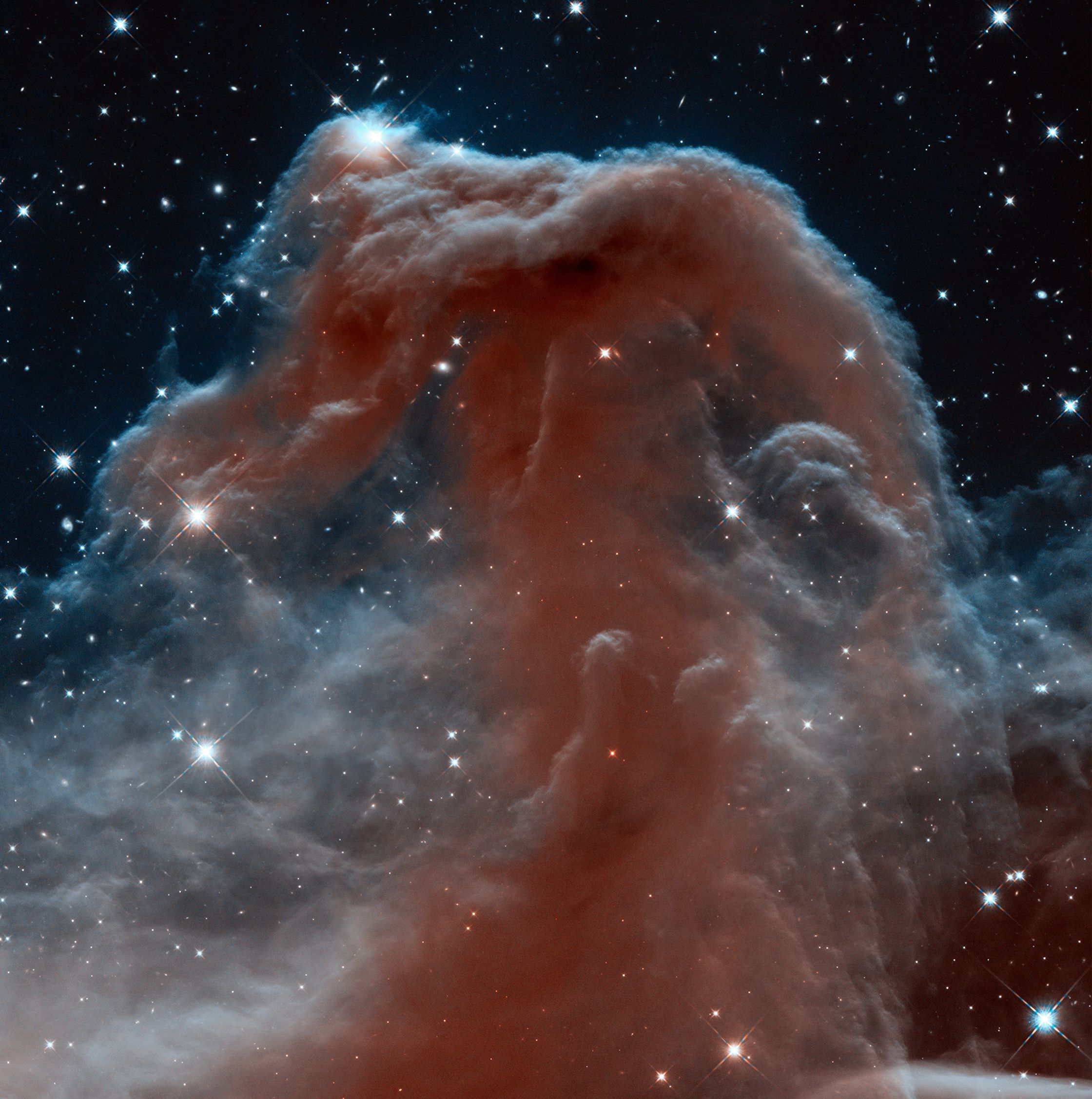Hubble Sees a Horsehead of a Different Color
2013-04-19
Looking like an apparition rising from whitecaps of interstellar foam, the iconic Horsehead Nebula has graced astronomy books ever since its discovery over a century ago. The nebula is a favorite target for amateur and professional astronomers.
In this new Hubble Space Telescope view, the nebula appears in a new light, as seen in infrared wavelengths. The nebula, shadowy in optical light, appears transparent and ethereal when seen in the infrared, represented here with visible shades. The rich tapestry of the Horsehead Nebula pops out against the backdrop of Milky Way stars and distant galaxies that are easily seen in infrared light.
The Horsehead Nebula is part of a much larger complex in the constellation Orion. Known collectively as the Orion Molecular Cloud, it also houses other famous objects such as the Great Orion Nebula (M42), the Flame Nebula, and Barnard's Loop. At about 1,500 light-years away, this complex is one of the nearest and most easily photographed regions in which massive stars are being formed.
Hubble's pairing of infrared sensitivity and unparalleled resolution offers a tantalizing hint of what the upcoming James Webb Space Telescope, set for launch in 2018, will be able to do.
See the webside for more details: http://hubblesite.org/newscenter/archive/releases/2013/12/image/a/ (SY)

 Search
Search

